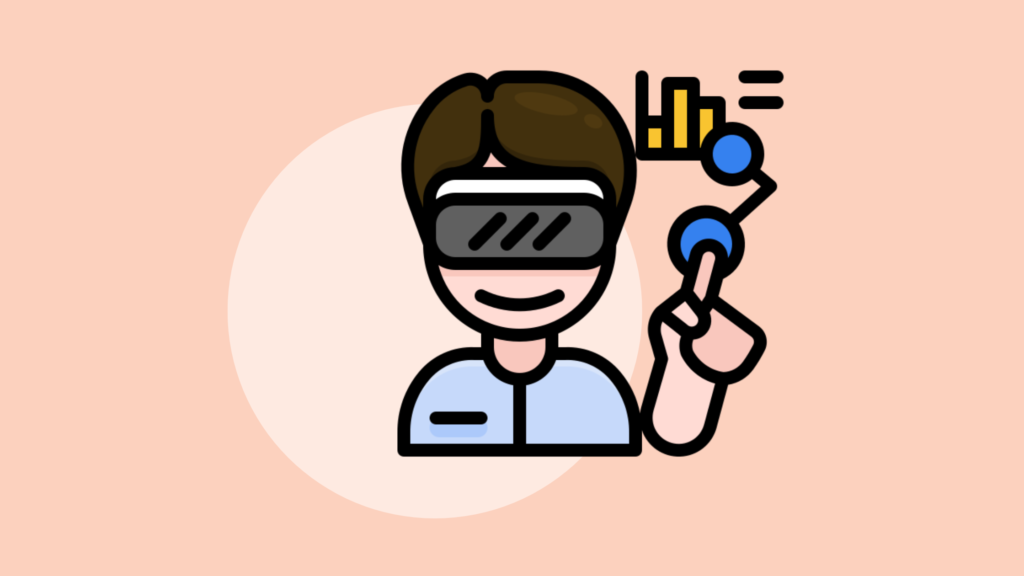In the dynamic world of marketing, Augmented Reality (AR) and Virtual Reality (VR) are revolutionizing strategies. Companies are leveraging these technologies to create immersive and interactive experiences. AR in marketing and VR in marketing provide a unique way to engage customers, offering them an innovative path to interact with products and services.
Enhancing Customer Experience
Immersive Product Demonstrations
AR and VR in marketing allow brands to offer immersive product demonstrations. Potential customers can virtually try on clothes, visualize furniture in their homes, or test drive cars. This interactive approach helps in reducing the uncertainty that often accompanies online shopping.
Interactive Advertisements
Interactive advertisements are becoming more prevalent with the advent of AR and VR. These ads provide an engaging experience, capturing the audience’s attention more effectively than traditional ads. By incorporating interactive elements, brands can convey their message in a memorable way.
Boosting Brand Engagement
Virtual Events and Showrooms
Virtual events and showrooms are gaining popularity. They provide an excellent platform for brands to showcase their products in a 3D environment. Customers can explore these virtual spaces at their convenience, leading to higher engagement rates.
Gamification in Marketing
Gamification is another exciting application of AR and VR in marketing. By turning marketing campaigns into games, brands can engage customers in a fun and interactive manner. This not only increases brand awareness but also fosters a deeper connection with the audience.
Driving Sales with Innovative Techniques
Augmented Reality Shopping
AR shopping apps are transforming the retail industry. These apps allow customers to see how products will look in real life before making a purchase. For instance, beauty brands use AR in marketing to let customers try on makeup virtually, enhancing the shopping experience and driving sales.
Virtual Reality Tours
VR tours are a game-changer for the real estate and travel industries. Potential buyers can tour properties or destinations from the comfort of their homes. This convenience can significantly shorten the sales cycle and increase conversion rates.
Future Trends in AR and VR Marketing
Personalized Marketing Experiences
Personalization is key in modern marketing. AR and VR technologies enable highly personalized experiences. By collecting data on customer preferences, brands can tailor their marketing efforts to meet individual needs, resulting in more effective campaigns.
Expanding Reach with Social Media Integration
Integrating AR and VR with social media platforms expands a brand’s reach. Social media giants like Facebook and Instagram are already incorporating these technologies, allowing brands to create interactive and engaging content that reaches a broader audience.
Overcoming Challenges in AR and VR Marketing
Cost and Accessibility
One of the primary challenges in implementing AR and VR in marketing is the cost. Developing high-quality AR and VR experiences can be expensive. However, as technology advances and becomes more accessible, the cost barrier is gradually lowering. Additionally, companies are finding innovative ways to create cost-effective AR and VR solutions that still offer a high level of engagement.
Technical Limitations
Technical limitations can also pose challenges. Ensuring that AR and VR experiences are compatible with various devices and platforms requires significant technical expertise. However, with continuous advancements in technology, these limitations are becoming less of a hurdle. Cross-platform compatibility is improving, making it easier for brands to reach a wider audience.
Measuring the Impact of AR and VR Marketing
Analytics and Data Insights
Measuring the effectiveness of VR and AR in marketing campaigns is crucial. Advanced analytics tools can track user interactions, engagement levels, and conversion rates. These insights help brands understand the impact of their campaigns and optimize them for better results. By leveraging data, companies can refine their strategies and maximize their return on investment.
Customer Feedback and Adaptation
Customer feedback is invaluable in assessing the success of AR and VR marketing initiatives. By actively seeking and analyzing feedback, brands can identify areas for improvement and adapt their strategies accordingly. This iterative process ensures that AR and VR experiences remain relevant and engaging to the target audience.
Case Studies: Successful AR and VR Marketing Campaigns
IKEA’s AR Furniture App
IKEA’s AR furniture app, IKEA Place, is a prime example of effective AR marketing. The app allows users to place virtual furniture in their real-world environment using their smartphones. This innovative approach helps customers visualize how products will look in their homes, leading to increased confidence in their purchasing decisions.
TOMS Virtual Giving Trip
TOMS Shoes leveraged VR in marketing to create a powerful marketing campaign that showcased their charitable efforts. The Virtual Giving Trip allowed customers to experience the impact of their purchases firsthand by virtually traveling to remote locations where TOMS donates shoes. This immersive experience strengthened the emotional connection between the brand and its customers, enhancing brand loyalty.
The Future of AR and VR in Marketing
Integration with Artificial Intelligence
The future of AR and VR in marketing is closely tied to advancements in artificial intelligence (AI). AI can enhance AR and VR experiences by providing personalized recommendations and real-time adjustments based on user interactions. This synergy will lead to even more engaging and effective marketing campaigns.
Expansion into New Industries
While AR and VR are already making waves in retail and real estate, their potential extends to various other industries. Healthcare, education, and entertainment are just a few sectors that can benefit from AR and VR marketing strategies. As these technologies become more widespread, we can expect to see innovative applications across different fields.
Final Thoughts
VR and AR in marketing are revolutionizing the marketing industry, offering unprecedented opportunities for brands to connect with their audience. By creating immersive, interactive, and personalized experiences, companies can enhance customer engagement, drive sales, and build stronger brand loyalty. As technology continues to evolve, the possibilities for AR and VR in marketing are limitless. Brands that stay ahead of the curve and embrace these cutting-edge technologies will undoubtedly reap the benefits in the competitive marketplace.

